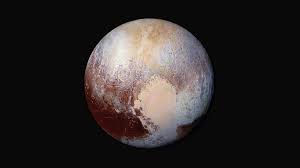Why Haven’t Humans Landed on Mars?
- Beyondthestarss
- Jan 18, 2023
- 2 min read
Humans landing on Mars is the next big step in space exploration. We landed on the Moon over 50 years ago (16 July 1969), so why aren’t we on Mars yet? Surely landing on Mars can’t be that much harder? Well, that’s where you’re wrong.

Credit: The Mars Society
The Moon is an average of 384 400km (238 855 miles) from Earth, whereas the average distance between Mars and Earth is 225 million km (140 million miles). The difference between 384 400 km and 225 million km is huge.
It takes 3 days to get to the moon and is estimated to take about nine months to get to Mars. Most rockets launched out of the atmosphere run on rocket fuel, but this takes up a lot of space. This is not ideal for traveling long distances. So new technologies need to be and are busy being developed (see technologies NASA is advancing to send humans to Mars).
The next problem is that we don’t yet have enough information on how humans will cope, both mentally and physically, with being in a small spaceship with low gravity for several months. Floating in a small container millions of miles away from anything and everything you’ve ever known with a small group of people is bound to take at toll on your mental health. Also, spending long periods of time in space has proven to have negative effects on the human body, such as causing bones and muscles to weaken. Studying astronauts living on the International Space Station, NASA's CHAPEA, the Artemis mission and missions to Antarctica are all ways that are helping us get more information about this.
Another difficulty is landing safely. Mars has a much thinner atmosphere than Earth, meaning there’s much less air resistance, or drag. Air resistance is the force caused by air that acts in the
opposite direction to an object’s motion. This means that a spaceship will fall at a much higher speed, making it likely to crash. So, it has to be slowed down: the upward force acting on it needs to be increased. NASA is working on an inflatable decelerator to slow the landing craft when it enters the atmosphere. Along with that the spaceship would need something similar to supersonic retropulsion (jets that increase the upward force on the craft, thereby slowing it down).
Going to Mars is no small task. It’s certainly more difficult than going to the moon. We have a long way to go before we’ll be watching someone step foot on Mars, saying something along the lines of ‘One small step for man, one extraordinarily huge leap for mankind’. We need more information, more technological advancements, more understanding. It’s thought by professionals that humans should land on Mars sometime in the 2030s or 2040s.
References: 1. https://www.space.com/16875-how-far-away-is-mars.html
2. https://www.space.com/18145-how-far-is-the-moon.html
3. https://www.space.com/24701-how-long-does-it-take-to-get-to-mars.html
4. https://astronomy.com/news/2021/09/why-havent-humans-reached-mars
5. https://humans-in-space.jaxa.jp/en/life/health-in-space/body-impact/#:~:text=If%20you%20stay%20for%20a%20long%20time%20in%20space%2C%20your,muscles%20of%20your%20lower%20body.
6. https://www.ssc.education.ed.ac.uk/BSL/physics/airresistd.htm





Comments